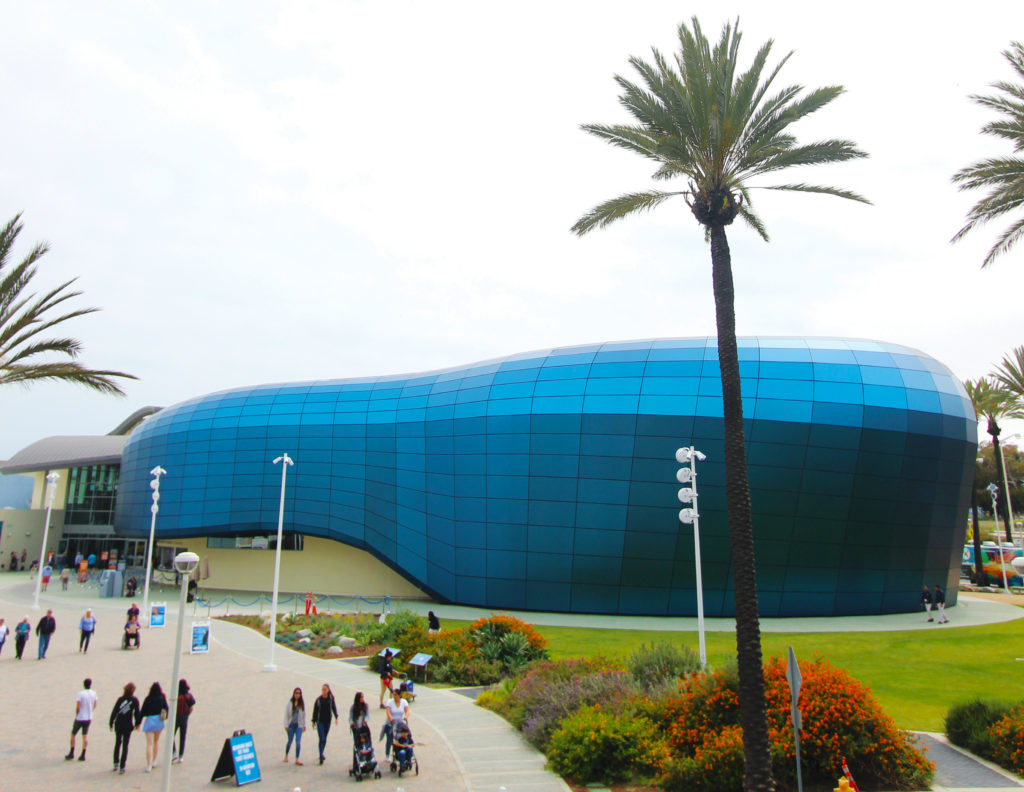With the grand opening of its new wing, Pacific Visions, the Aquarium of the Pacific becomes unlike any other such institution in the United States. Integrating art, technology, live animals and entertainment, the new wing is designed to engage visitors with a combination of factors so that they leave with a deeper understanding of the world’s oceans, their impact on them and what they can do to create a sustainable future for all.
Daniel Ashe, president of the Association of Zoos & Aquariums, said that while other Aquariums in the U.S. have begun focusing on this messaging, Pacific Visions is unique. “We have other places like the Monterey Bay Aquarium or Georgia Aquarium that are incorporating technology and, maybe to a lesser extent, art. But I would say they are definitely taking it to a new level here,” he told the Business Journal. “I am sure it will attract a lot of attention in our community and inspire other people to think differently.”
Incorporating multiple facets – an art gallery, an interactive theater and more – ought to make the concept of ocean advocacy more relatable to visitors, Ashe said. “I think it’ll broaden the audience for the Aquarium of the Pacific, and it will make them a more purposeful, relevant, relatable organization,” he reflected.
Ashe said that Pacific Visions is the sort of project that his association hopes for and expects from its members. “Our vision of a modern aquarium or zoo is certainly a place that is entertaining and fascinating and enjoyable, but [also] one that is purposeful. Clearly, that’s what they are striving for here and, from all appearance, what they’ve achieved,” he said. “The important thing about something like Pacific Visions is that it then becomes the standard that our other members will see and then seek to emulate and exceed.”

Ashe said that, with its Pacific Visions expansion, the Aquarium of the Pacific is raising the bar for other institutions among the AZA’s members, which collectively receive 200 million visitors each year. He hopes that as other aquariums and zoos take notice, messages similar to that of Pacific Visions will reach this greater audience.
According to a representative for the National Oceanic and Atmospheric Administration (NOAA), the federal scientific agency focused on conditions of oceans and the atmosphere, Pacific Visions will inspire visitors in new and exciting ways. “It is a very interactive way to discuss the challenges and opportunities facing our oceans. Whether through art or visiting speakers, the new expansion will help educate the next generation of ocean stewards,” Cindy Sandoval, a communications specialist for NOAA’s fisheries division, said.
The Aquarium has worked closely with NOAA over the years, hosting guest lecturers and collaborating on panels and workshops. “NOAA’s Office of Aquaculture has a close working relationship with [the] Aquarium of the Pacific and recognizes their work to educate and inform the public,” Sandoval said. “Pacific Visions will be a great platform to inspire ecosystem stewardship and increase understanding about many topics including sustainable seafood.”
Sandoval explained that the Aquarium has been a leader in educating the public about “complex and often misunderstood topics” such as marine aquaculture and sustainable seafood. “Most of the public still has limited understanding of aquaculture and may encounter information that can be out of date, inaccurate, or incomplete. Having a trusted science source and community member share accurate information can help educate the public.”
Sandoval concluded, “The Aquarium of the Pacific is more than just a place to see animals. It already has an outstanding traditional aquarium, but the addition of the state-of-the-art Pacific Visions will help create a space to discuss impacts on ecosystems and ways to collaborate towards a more sustainable future.”
